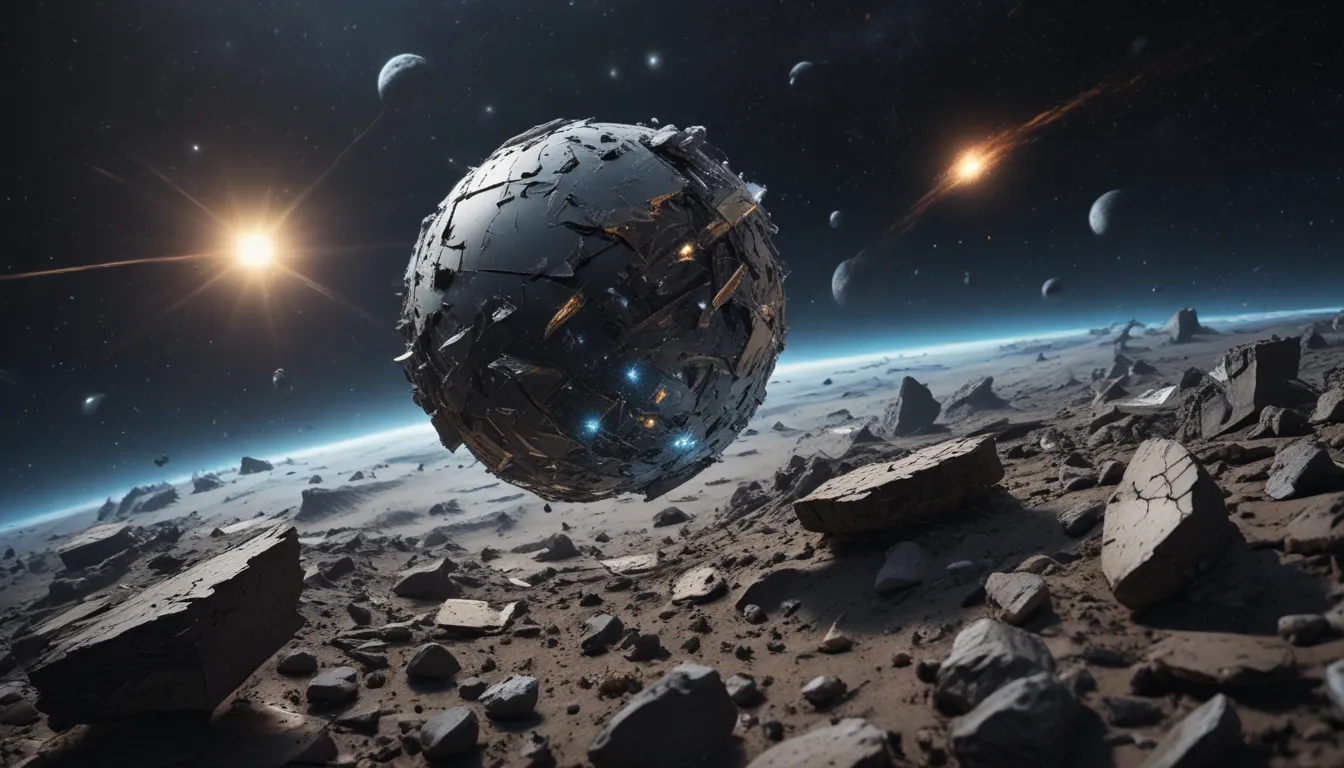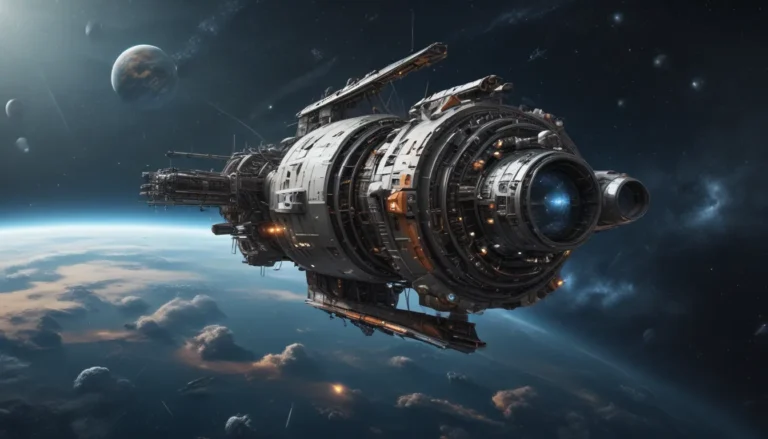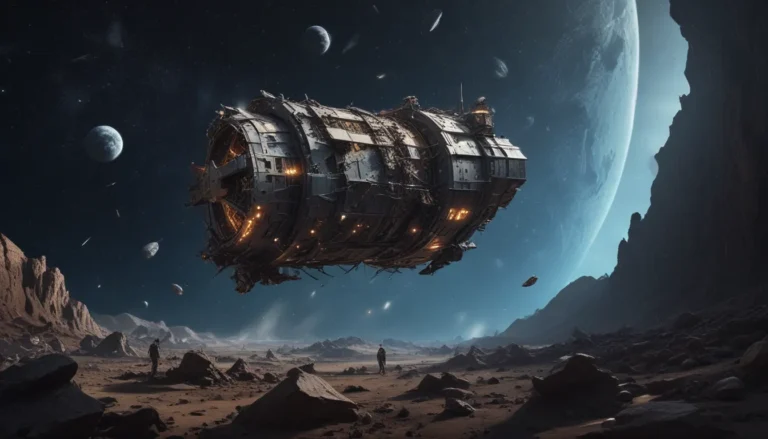The pictures we use in our articles might not show exactly what the words say. We choose these pictures to make you interested in reading more. The pictures work together with the words but don’t take their place. The words still tell you the important facts.
Are you curious about the captivating world of space debris removal? Space debris, also known as space junk, is an ever-growing concern for space agencies and satellite operators worldwide. With defunct satellites and rocket stages orbiting the Earth, the risks of collisions and damage to operational spacecraft are on the rise. In this guide, we will explore 20 fascinating facts about space debris removal, from the challenges it presents to the innovative technologies being developed to combat this issue. Join us on this educational journey as we delve into the realm of space junk and the efforts being made to ensure a sustainable and safe space environment for future space exploration.
The Problem of Space Debris
Space debris, also known as space junk, encompasses defunct human-made objects and fragments that orbit the Earth. Ranging from tiny paint flecks to large defunct satellites, each piece of debris poses a potential risk of collision in orbit.
The Growing Threat
Space debris poses a significant threat to space missions, satellites, and even astronauts aboard the International Space Station. The increasing density of debris in orbit raises concerns about the safety of spacecraft and the sustainability of space exploration.
Collision Risks
The high speeds at which space debris travels in orbit can lead to catastrophic damage upon collision, posing a danger to operational satellites and spacecraft. Mitigating these collision risks is crucial to ensuring the safety of assets in space.
Tracking and Monitoring
Space agencies like NASA employ advanced radar and telescopic systems to track and monitor space debris, allowing them to predict collision risks and take precautionary measures to avoid potential impacts.
Space Debris Mitigation Guidelines
Guidelines have been put in place to ensure that satellites and spacecraft are designed with measures to reduce the creation of space debris. By incorporating debris mitigation strategies into mission planning, the space industry aims to minimize the impact of human-made objects in orbit.
Active Debris Removal
Active debris removal involves proactive measures to actively capture and remove space debris from orbit, thus reducing the risk of collisions. Innovations in technology and collaborative efforts are driving advancements in this critical area of space exploration.
Innovative Technologies for Space Debris Removal
From harpoon technology to space tugboats, various creative methods are being explored for capturing and de-orbiting space debris. These cutting-edge technologies hold the key to a cleaner and safer space environment in the future.
Harpoon Technology
Harpooning is one method being investigated for capturing and de-orbiting large pieces of space debris. By deploying a harpoon-like mechanism, spacecraft can latch onto debris and guide it towards a controlled re-entry into Earth's atmosphere.
Nets and Brakes
Other concepts for space debris removal involve using nets and brakes to capture and slow down objects, facilitating their safe disposal upon re-entry. These innovative approaches offer promising solutions for tackling the challenge of space junk.
Laser Technology
Laser technology has been proposed as a potential method for breaking down smaller space debris particles into harmless fragments. By targeting and disintegrating debris in orbit, lasers could help reduce the overall impact of debris on operational spacecraft.
Collaborative Efforts and Initiatives
Many countries and space agencies are working together to address the issue of space debris through joint research projects and clean-up missions. By pooling expertise and resources, these collaborative efforts aim to tackle the global challenge of space junk removal.
The Future of Space Debris Removal
Ongoing research and technological advancements are paving the way for more effective and efficient space debris removal strategies in the future. By investing in innovative solutions and fostering international cooperation, the space industry is making significant progress towards a cleaner and safer orbital environment.
Conclusion
In conclusion, space debris removal is a critical endeavor that plays a key role in ensuring the sustainability of space exploration and the safety of spacecraft in orbit. As the threat of space debris continues to grow, the development of advanced technologies and collaborative initiatives is essential for mitigating risks and preserving the integrity of outer space.
By embracing innovative solutions and fostering cooperation among spacefaring nations, we can address the challenges posed by space debris and pave the way for a more sustainable future in space. Together, we can make a meaningful impact on the preservation of our orbital environment and the advancement of space exploration for generations to come.
FAQs
1. What is space debris?
Space debris, also known as space junk, refers to man-made objects left in orbit around the Earth, including defunct satellites, rocket stages, and fragments from collisions.
2. Why is space debris removal important?
Space debris removal is crucial to ensure the safety of space missions, satellites, and astronauts. By actively removing debris from orbit, we can reduce collision risks and safeguard vital assets in space.
3. How is space debris removed?
Various methods, such as robotic systems, nets, harpoons, and dedicated missions, are being developed for space debris removal. These technologies aim to capture and de-orbit debris to prevent collisions in orbit.
4. Who is responsible for space debris removal?
Space debris removal is a collective responsibility shared by space agencies, private companies, and international organizations. By working together, these entities can implement effective strategies for debris removal and mitigation.
5. Can space debris be recycled?
While some components of space debris can be repurposed or reused, the majority of debris is fragmented or damaged beyond recycling. Advances in recycling technologies may offer new opportunities for reducing space debris in the future.
As we continue to explore the realm of space debris removal, it is essential to stay informed and engaged with the latest developments in this critical field. By learning more about the challenges and opportunities in space debris removal, we can contribute to a safer and more sustainable orbital environment. Join us on this exciting journey as we strive to protect the future of space exploration and ensure the long-term viability of space activities.






